September 15th, 2014
How Does a Bird House Help The Environment?
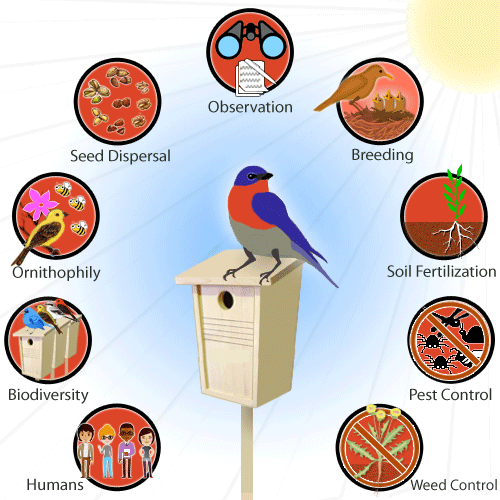
"You might be surprised to know that bird houses offer 9 important benefits to our environment. Bird houses help birds to survive, and in turn, birds are able to breed, keep weeds in control, keep insects in control, pollinate flowering plants, fertilize the soil, disperse seeds, create biodiversity, and help humans to be happy."
Yes, bird houses play a dynamic role in nature. Anywhere you go in this world, you'll see birds relying on bird houses for warmth and protection. Altogether, bird houses help birds to live well and be happy. Without man-made bird house structures, the avian kingdom would not be the same.
Basically, a house for birds is an internal nest compartment which uses a roof, floor and walls to form a box-shaped "house." But it's more than just a house, it's a "home" for birds. The primary purpose of a bird house is to help birds and the environment. And it's easy to do, as anyone can offer a little time and effort by mounting a bird house somewhere in their local habitat where a motherbird can find it.
A bird house can help our environment in 9 ways...
- Breeding: Breeding refers to the activities associated with mating and
reproduction. Breeding activities are easier when a safe and warm place is available to lay eggs and
raise fledglings. During mating seasons, there is a large percentage of oviparous animals in the world
that will search for an enclosed structure to take care of their young. A safe and warm place is
needed for eggs to go through a process unlike the typical birth of other animals. Motherbirds don't
have an internal gestation period. Instead, development takes place during the incubation period
when the egg is outside of the womb. Full development of the embryo takes
place during the incubation period, and the length of time for incubation varies according to a
particular species when the mother is keeping her eggs warm until hatching.
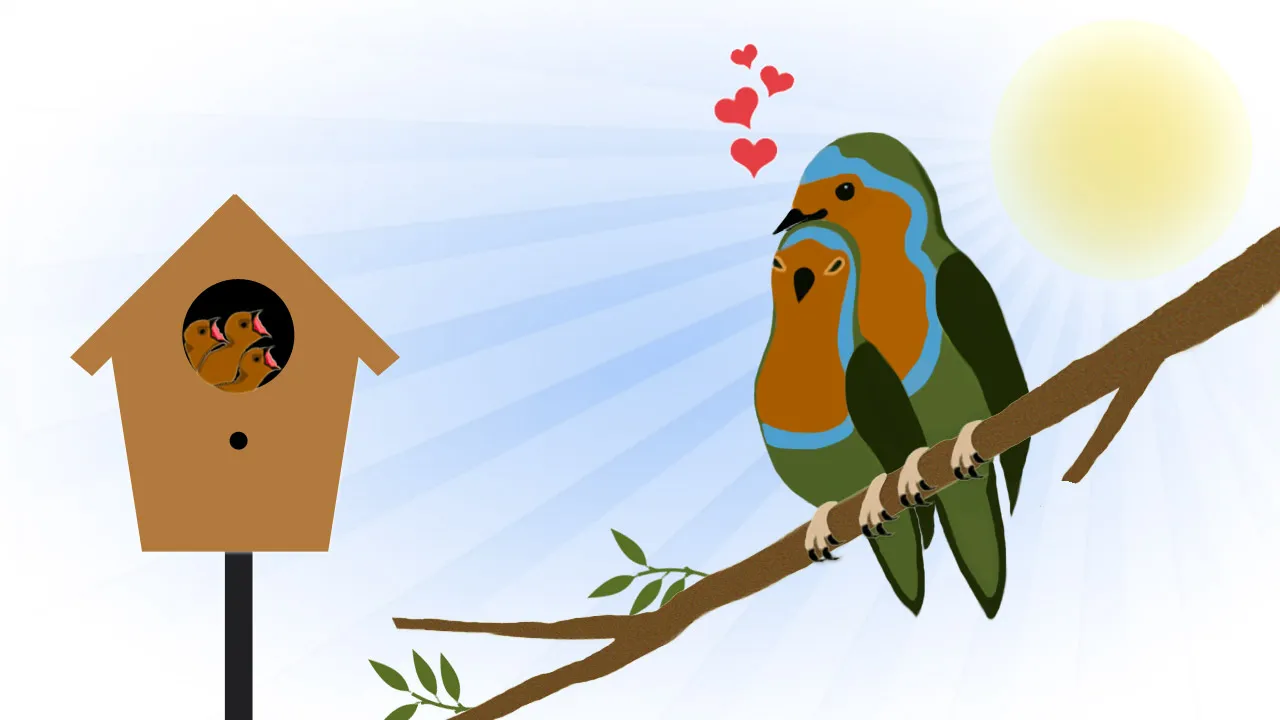 The interior space of a man-made wooden structure built specifically for avian wildlife offers the
advantage of a successful breeding season, especially for endangered species. When the proper dimensions
are in place, eggs are more likely to hatch and grow all the way into mature fledglings, eventually
leaving the nest.
The interior space of a man-made wooden structure built specifically for avian wildlife offers the
advantage of a successful breeding season, especially for endangered species. When the proper dimensions
are in place, eggs are more likely to hatch and grow all the way into mature fledglings, eventually
leaving the nest.
- Soil Fertilization: Bird houses help birds to fertilize the soil. How?
Birds will use a bird house perch to sit and scan the ground below for signs of food. When they see food,
they swoop down from the perch to the ground below to forage. During the foraging process, they
effectively peck, scratch, hop, and defecate on the surface of the ground, essentially
fertilizing the soil. The scratching effect by their claws "etches" and
"aerates" the soil, causing it to become loose and more absorbent. This allows various nutrients and
organic debris to mix in with the top soil and increase good bacteria needed for pH balance.
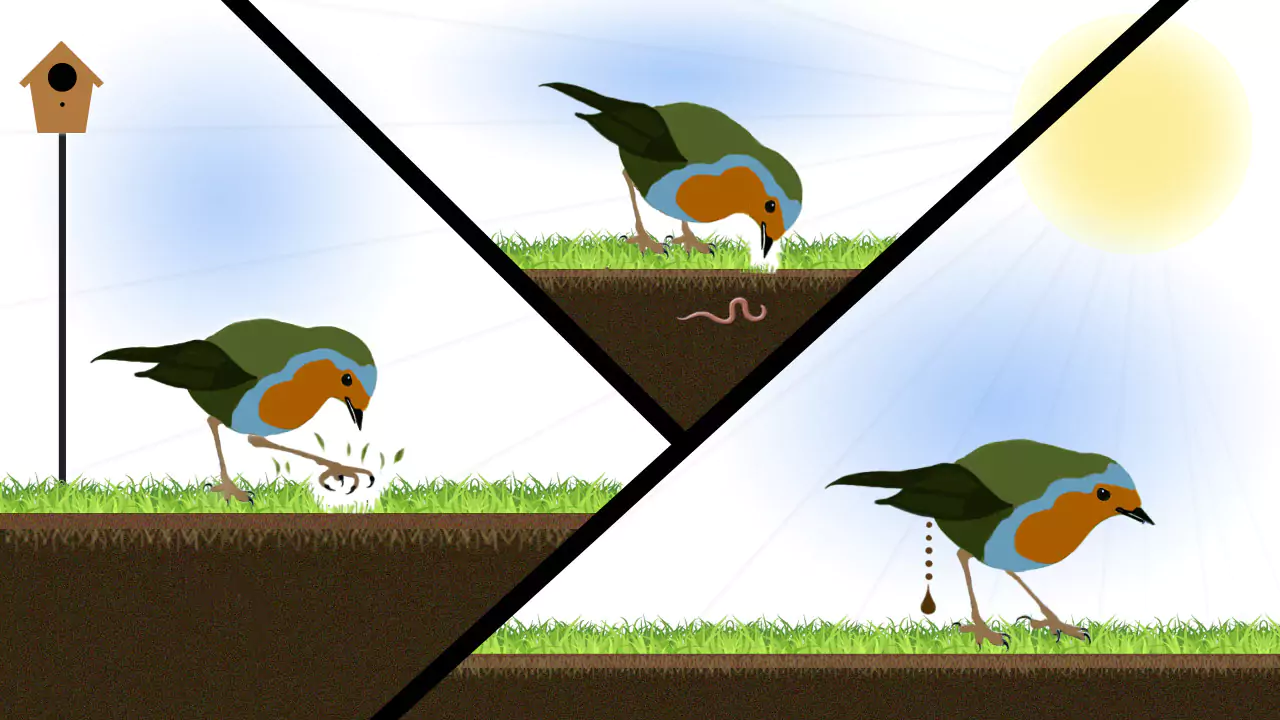 Birds help to create and maintain a robust compost mixture in the soil, and that's good for all of us,
including farmers and gardeners.
Birds help to create and maintain a robust compost mixture in the soil, and that's good for all of us,
including farmers and gardeners.
- Pest Control: Insectivorous birds are mother natures' first choice for the
replacement of chemicals found in insecticides. Why? Because insectivores naturally eat flies,
mosquitoes, beetles and other pests. Without birds eating these insects, massive infestations would
occur which could potentially devastate our ecosystem. Birds benefit us because of their ability to
hold in-check the most powerful living species on earth,.. "insects!" If left unchecked, insects might
be a much bigger problem worldwide.
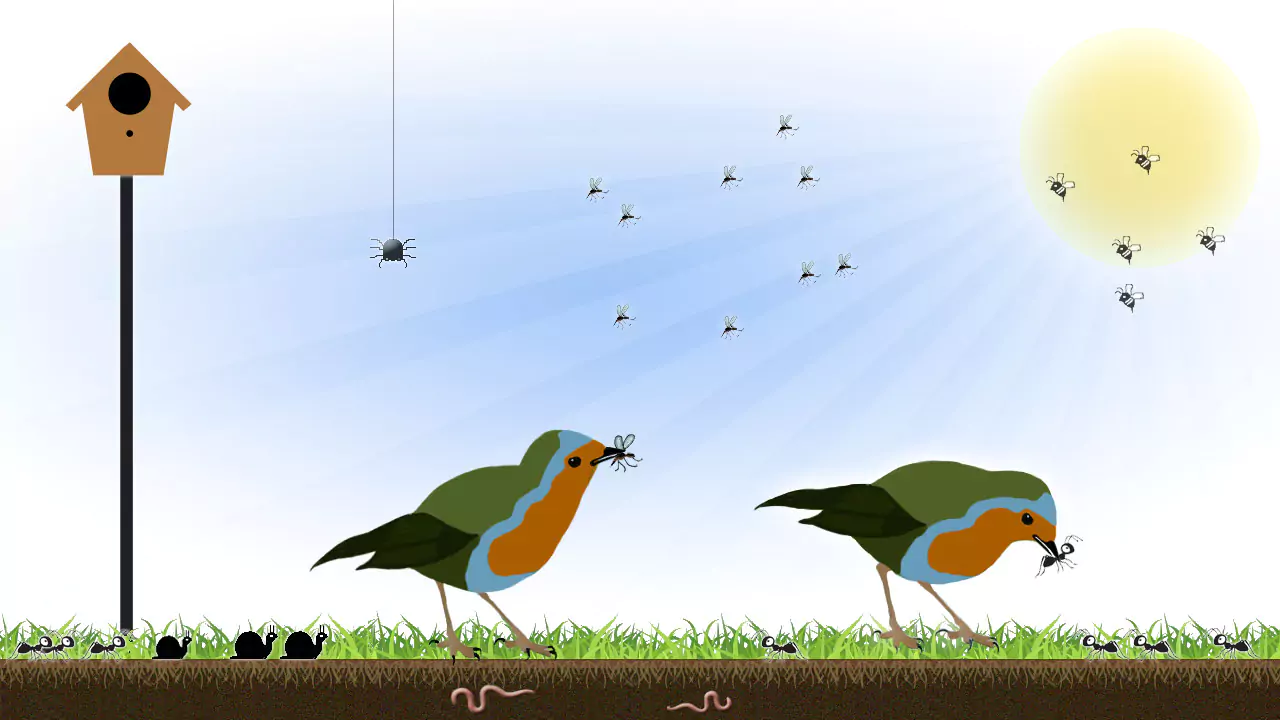 Predacious birds are also an effective replacement for rodenticides. Predators such as hawks and owls
naturally hunt and eat rodents, effectively keeping them in check too. Altogether, insects and rodents
aren't necessarily bad, but they're sometimes concentrated too heavily in the wrong places, such as
city parks, farmlands and residential gardens.
Predacious birds are also an effective replacement for rodenticides. Predators such as hawks and owls
naturally hunt and eat rodents, effectively keeping them in check too. Altogether, insects and rodents
aren't necessarily bad, but they're sometimes concentrated too heavily in the wrong places, such as
city parks, farmlands and residential gardens.
- Weed Control: When it comes to doing their part in nature, birds help to
keep weeds under control through the constant ingestion of weed-seeds, weed-blossoms, as well as the
insects that live on them. Fortunately, there are natural agents willing to work for free when
it comes to keeping weed growth in check. Sparrows, jays, finches, goldfinches, chickadees, Clark's
Nutcracker, dove and blackbirds like to eat seeds, including seeds
from ragweed, pigeon grass, smartweed, bindweed, crab grass, lamb's-quarters, and pigweed. A number of
these weed-destroyers also like insects, but weed-seeds are definitely in the mix. Finches and sparrows
are a few examples of heavy weed-seed consumers.
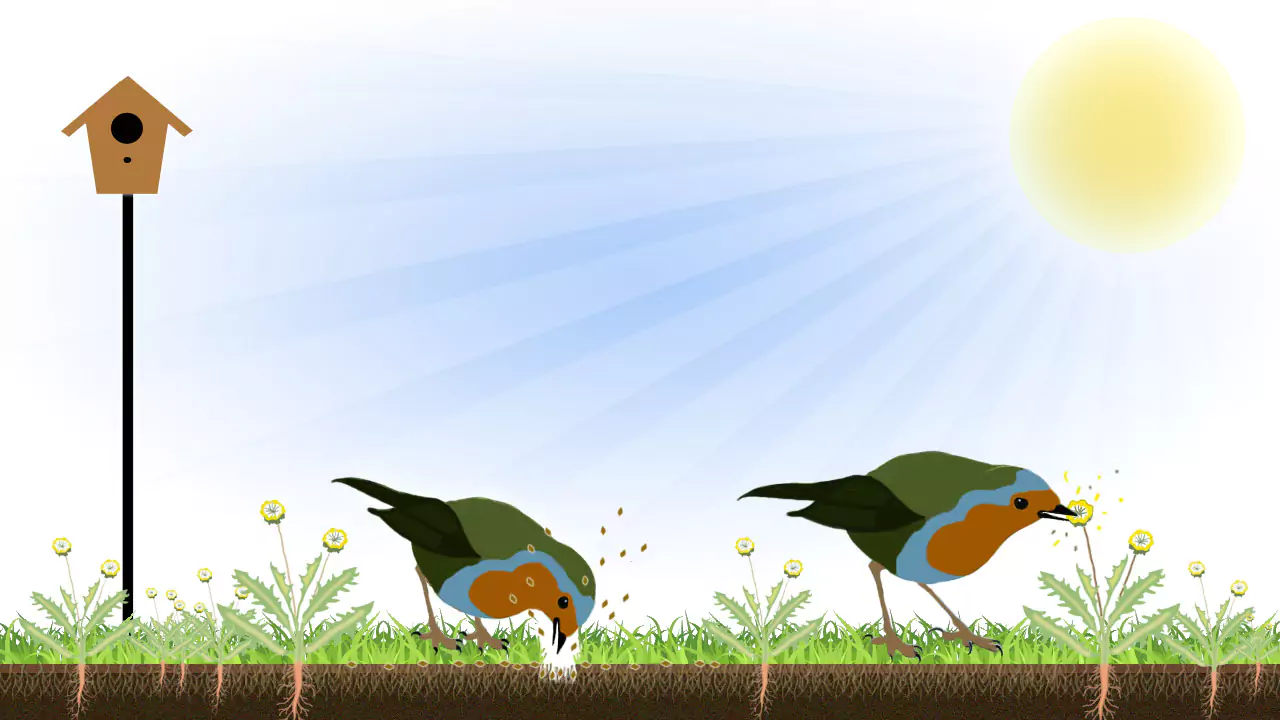 Seed-eaters not only devour significant amounts of weed-seeds, but also destroy weeds when using their
beaks to tear apart various parts of the weed plant to build nests. If it were not for avian nest
builders, weeds might be a much bigger problem. Weeds have a place in nature too, and are not necessarily
a bad plant, but weeds often grow too much in the wrong places.
Seed-eaters not only devour significant amounts of weed-seeds, but also destroy weeds when using their
beaks to tear apart various parts of the weed plant to build nests. If it were not for avian nest
builders, weeds might be a much bigger problem. Weeds have a place in nature too, and are not necessarily
a bad plant, but weeds often grow too much in the wrong places.
- Seed Dispersal: In the avian kingdom, birds help spread the seeds of good
plants, trees and grass, causing them to grow in other places. Some plants are dependent on other
forms of life for successful
seed dispersal
and regeneration. How? When seeds are eaten by birds, the outer seed coats are weakened as they pass
through the bird's digestive system. Once a seed has passed completely through the digestive tract,
it will often be dropped far away from the host plant's location, allowing new plants to regenerate and
expand into other areas.
Dissemination of good seeds also takes place from their claws during the motion of walking, running, hopping and scratching the surface of the ground. These actions stir up seeds from the ground and get blown by the wind, carried through water, and caught in the feathers and hair of other wildlife. Seeds are dispersed over a wider space of land allowing for less crowding among plants and trees. Seeds are also spread when they peck at food sources, such as plants, blossoms, vegetables and fruit. During the pecking process, seeds fall to the ground where they germinate and eventually grow.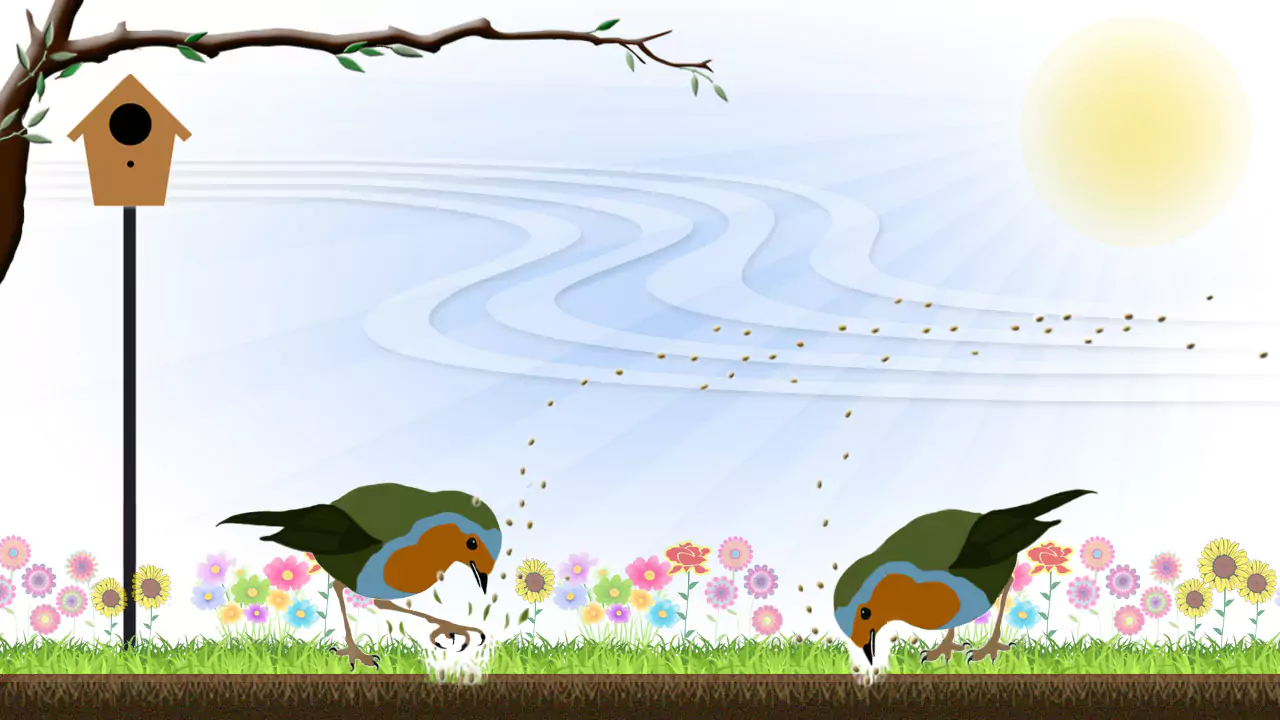 When birds stir up seeds from the ground and get blown by the wind, they don't travel very far.
However, it's not uncommon for a small percentage of seeds to travel thousands of feet away.
When birds stir up seeds from the ground and get blown by the wind, they don't travel very far.
However, it's not uncommon for a small percentage of seeds to travel thousands of feet away.
- Observation and Fact Gathering: Providing birds with safe structures to
live gives humans the opportunity to observe and study their behavior. This subsequently helps
everyone to better understand the great outdoors and how people and wildlife can live together.
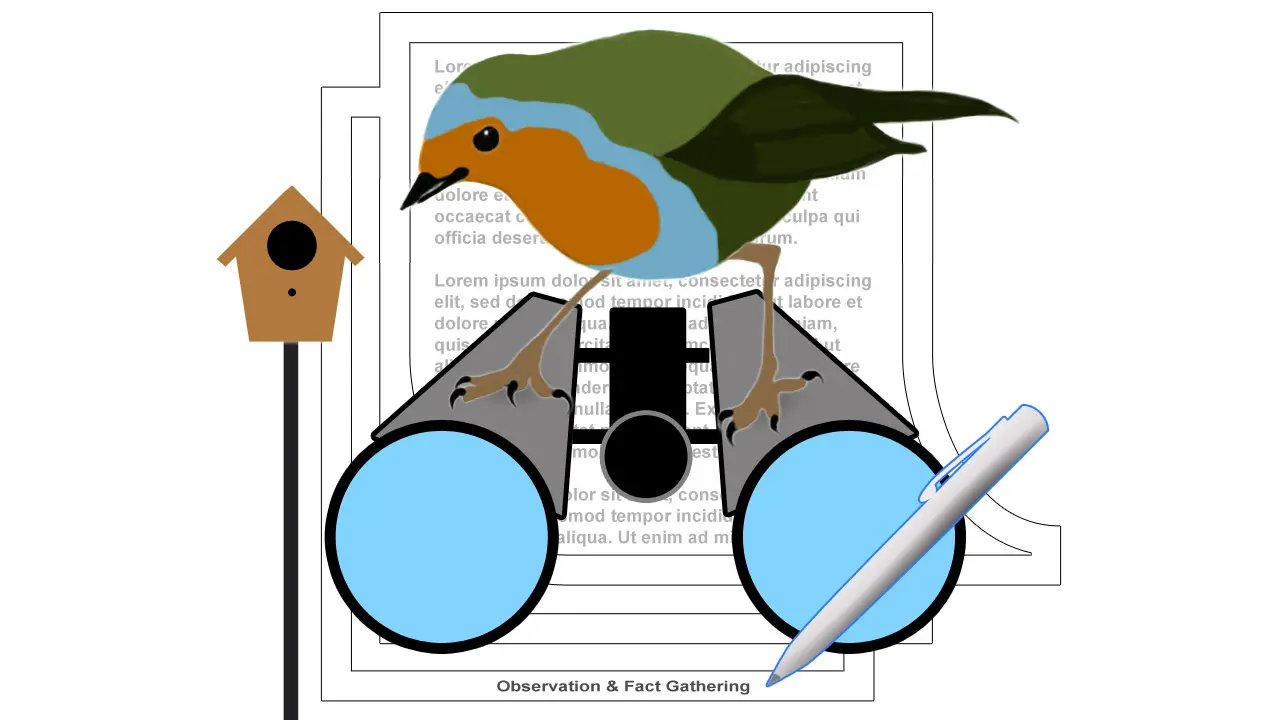 Observation and fact gathering is easy. A common notebook with blank ledger lines will get you started
recording basic information about birdlife in your local nieghborhood. Anyone who loves nature can do
it, and you don't need to be an expert or scientist. All you need is your backyard, a birdhouse, a pen,
something to write on,.. and that's it. Your on you way to becoming a "backyard scientist!
Observation and fact gathering is easy. A common notebook with blank ledger lines will get you started
recording basic information about birdlife in your local nieghborhood. Anyone who loves nature can do
it, and you don't need to be an expert or scientist. All you need is your backyard, a birdhouse, a pen,
something to write on,.. and that's it. Your on you way to becoming a "backyard scientist!
- Ornithophily: When considering the most common pollinators, people
automatically think of honey bees. And it's true that honey bees play a big role in transporting pollen
from one flower to another, but did you know birds aid in the pollination of plants too?
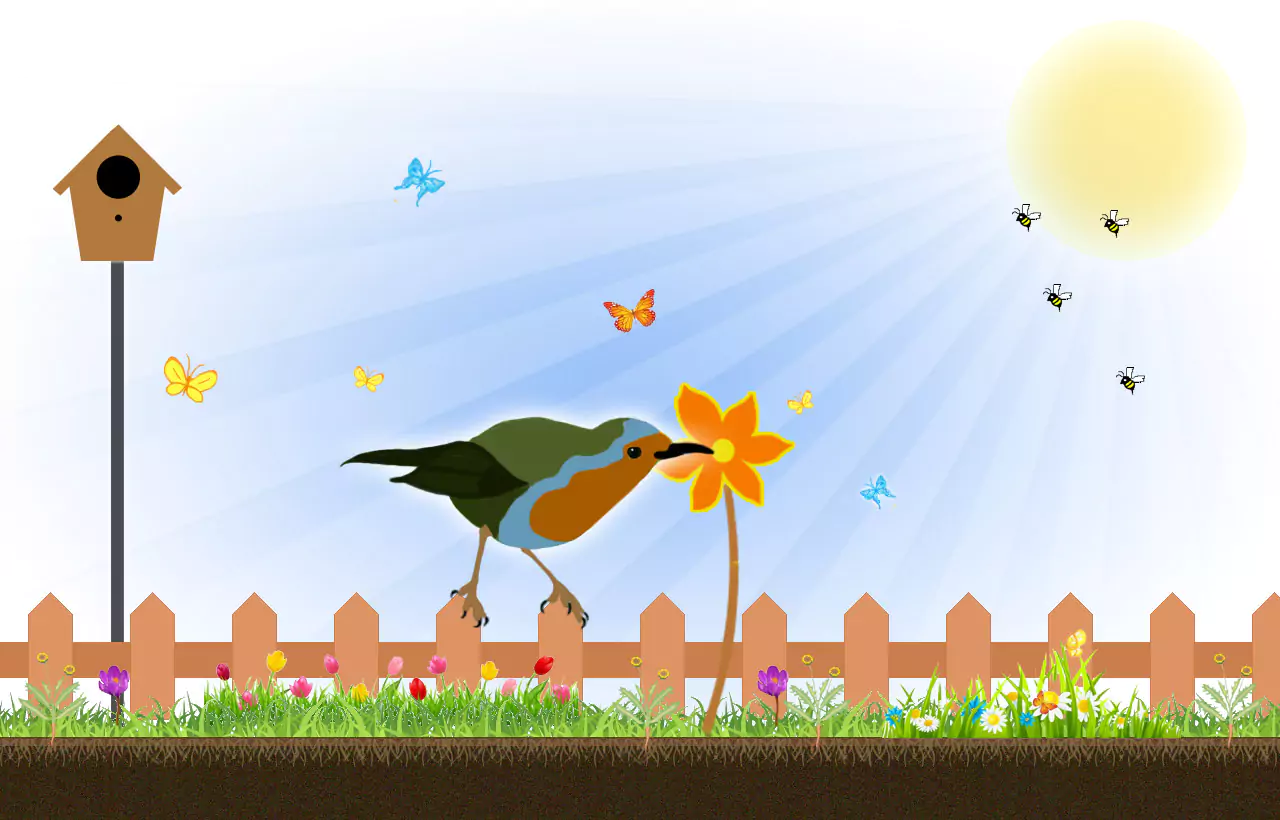 When pollination is carried out by birds, the term used to refer to it is
ornithophily. Pollination of flowering plants is common among a few unique
species, and one example is the smallest bird in the world - the
bee hummingbird. A few other notable pollinators are
sunbirds and spidereaters, both are relatively small
in size with very long bills. By placing a safe structure somewhere in nature, whether it's enclosed
or an open platform, you are
enabling the motherbird to lay her eggs and raise her young. Subsequently, more
pollinators will visit your neighborhood, essentially enhancing the pollination process for your flowers,
vegetable plants and fruit trees. Invite avian pollinators to your geographical area by creating a
pollinator friendly habitat in your yard or garden.
When pollination is carried out by birds, the term used to refer to it is
ornithophily. Pollination of flowering plants is common among a few unique
species, and one example is the smallest bird in the world - the
bee hummingbird. A few other notable pollinators are
sunbirds and spidereaters, both are relatively small
in size with very long bills. By placing a safe structure somewhere in nature, whether it's enclosed
or an open platform, you are
enabling the motherbird to lay her eggs and raise her young. Subsequently, more
pollinators will visit your neighborhood, essentially enhancing the pollination process for your flowers,
vegetable plants and fruit trees. Invite avian pollinators to your geographical area by creating a
pollinator friendly habitat in your yard or garden.
- Biodiversity: Bird houses promote biodiversity in the avian world. There is
a wonderful variety of birdlife in mountainous regions, lush green valleys, desert areas, waterways, and
even arctic regions. Indeed, birds of all kinds are everywhere around the globe. Different types have
different abilities, but collectively, all members of the bird-kingdom play a part in carrying out
what mother nature requires of them.
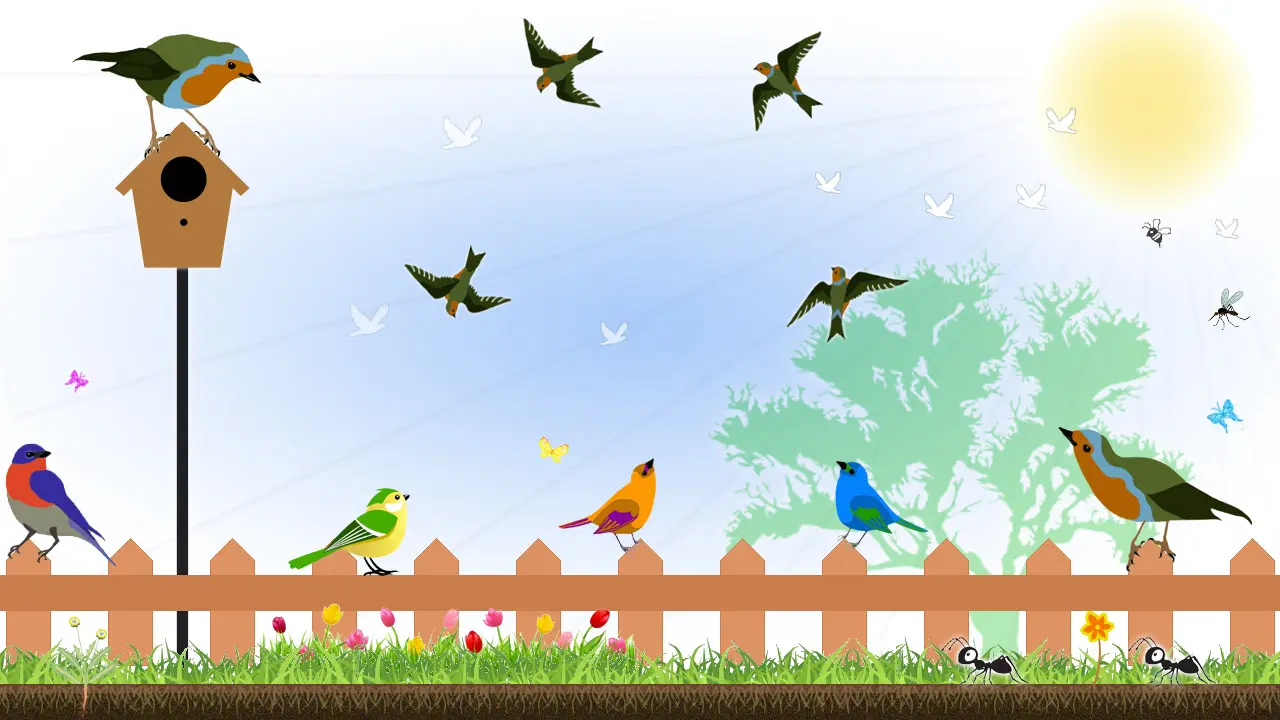 What would our world be like without a diverse and colorful array of birds? Bluebirds are good examples,
as their blue feathers are bright and beautiful to look at. They remind us of the beautiful biodiverstiy
that's all around us and makes us appreciate them. Bluebird numbers declined greatly in the 1900s, but
with the help of man-made structures such as bluebird houses (or bluebird boxes), bluebirds have made a
substantial recovery. Assisting bluebirds with bird houses will preserve bluebird numbers and keep the
outdoors populated with different shapes, sizes and colors of various bird species. A large number of
animals in the world depend on enclosed structures to survive, and anyone can help sustain the wonderful
variety of birdlife by simply mounting a birdhouse.
What would our world be like without a diverse and colorful array of birds? Bluebirds are good examples,
as their blue feathers are bright and beautiful to look at. They remind us of the beautiful biodiverstiy
that's all around us and makes us appreciate them. Bluebird numbers declined greatly in the 1900s, but
with the help of man-made structures such as bluebird houses (or bluebird boxes), bluebirds have made a
substantial recovery. Assisting bluebirds with bird houses will preserve bluebird numbers and keep the
outdoors populated with different shapes, sizes and colors of various bird species. A large number of
animals in the world depend on enclosed structures to survive, and anyone can help sustain the wonderful
variety of birdlife by simply mounting a birdhouse.
- Humans: Countless variables make up our world, and not the least of
which are humans. Yes, humans are part of the environment too, and can benefit from bird houses. How?
There is satisfaction that comes from creating something made from wood, including houses designed for
birds and structures designed to help feed them. Consequently, when we perceive the sights and sounds
of singing birds, it gives us a feeling that our contributions are helping the environment in which
they live.
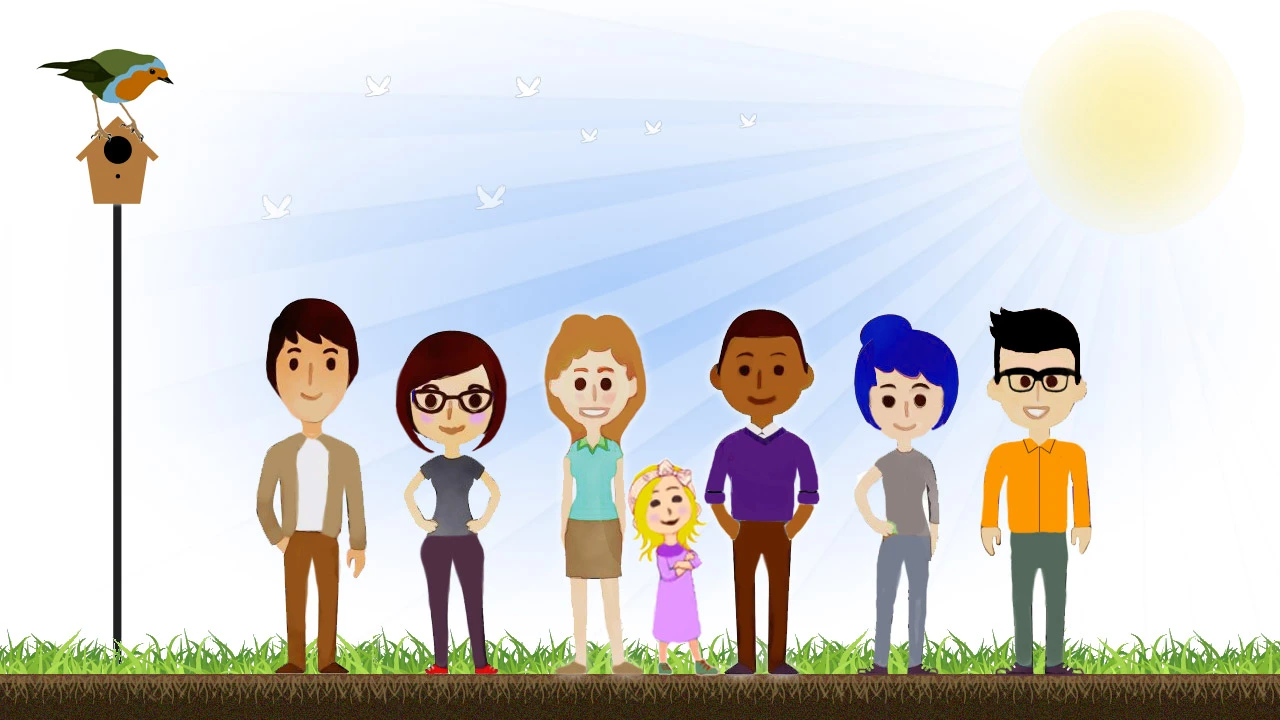 Indeed, people can appreciate birds. Not only do their feathers vary in color, their sizes vary as
well. Some are tiny, while others are incredibly large. Of the six animal categories belonging to
the biological kingdom (kingdom Animalia), birds are arguably the most diverse. Yes, the avian world
is amazing.
Indeed, people can appreciate birds. Not only do their feathers vary in color, their sizes vary as
well. Some are tiny, while others are incredibly large. Of the six animal categories belonging to
the biological kingdom (kingdom Animalia), birds are arguably the most diverse. Yes, the avian world
is amazing.
And how beautiful are bluebirds? Yes, they are magnificent to look at. Nature works with the feathers of a bluebird, as the feathers don't really have any blue pigment, but only appear blue to the human eye. When light is shining directly on them, the feathers look blue, but during low light, or when light is not directly shinning on them, feathers look gray or black. A process known as "structural coloration" allows keratin protein structures found in hair and feathers to act as prisms that scatter light and amplify the blue wavelength. The blue wavelengths of light are perceived by our eyes, causing the feathers to look blue when they're really not.
When considering every type of creature on earth, creatures with feathers are the colorful ones. Collectively, feathers can possess every color of the visible light spectrum, including non-colors of white and black. Their feathers are able to capture light and turn them into radiant colors of red, orange, yellow, green, blue, and violet, and all the infinite possibilities in between. It's easy to notice every distinguishable feature, such as the beak, head, back, throat, breast, wings, tail, and legs. They constantly remind us of how significant their contributions are.
Birdwatchers can especially appreciate all bird species. The feathers of various species are capable of producing several radiant colors, such as the feathers of the Sun Conure. This medium-sized parrot displays a rainbow of bright colors all in one beautiful bird. Just looking at the striking beauty of a Sun Conure strengthens our faith and gives us a feeling of fulfillment. And that's a healthy thing for everyone! When humans help these creatures, we see how our man-made structures help to keep them alive and well. - Odd or Unusual - Birds are constantly active and always moving. It's easy to appreciate them, as their unique abilities easily gets our attention. Even watching the odd and unusual motions of flightless birds is fun, like when a penguin wobbles across the snow, or when the fastest bird on earth (an ostrich) runs through the desert. The humble presence of these unique creatures reminds us of how important the simple things in life are.
- Colors - Various species are capable of producing radiant colors in their feathers, such as the Rainbow Lorikeet. The Rainbow Lorikeet is a species of parrot found in Australia, and is very distinguishable due to its colors that range from green, blue, orange, and yellow.
- Sounds - Consider the beautiful sounds of a wood thrush (Hylocichla mustelina). This bird is a super talented singer and can mimick the sounds of two birds singing at the same time. It uses its voicebox to harmonize two melodies to produce and harmonize multi-dimensional sounds. The status of this bird is classified as "threatened," and its trend is "decreasing."
- Friends - Making friends with birds gives us a feeling of joy. Some are willing to come very close, for example, pigeons, ducks and seagulls and will come close enough to eat out of the hands of humans who offer food. Hummingbirds too, will hover over a human hand offering a container of nectar to sip from. Parrots are another example, and will eat from humans hands while also showing affection.
- Expanding boundaries of cities.
- Forrest fires caused by careless humans.
- Pollution in the air and waterways.
- Human activity such as dirt-bikes, ATV's, campgrounds and over-hunting.
- Competition from non-native birds being introduced into different bird habitats other than their own.
Why do we need bird houses?
We need bird houses as a way to show our feathered friends we care about them. From time to time, birds and other wildlife need extra help to survive, and at no fault of their own. Human activities and land developers are constantly pushing them out of their natural habitat forcing them to look for new places to live.
People all over the world build bird houses to show their appreciation for birds...
Importance of Bird Houses
It's obvious how important bird houses are to our surroundings. Our current world has become such an active and crowded place that birds are becoming more dependent on man-made bird structures to survive. The encroachment of land development has disrupted indigenous species in their natural habitat to the point where birds are forced to live in less desirable locations, and competing with other aggressive species that are unwilling to accept them as their new neighbors. When you think about the disruptions occurring in our society today, it's easy to appreciate and understand the importance of a simple wooden box designed as a "home." This is particularly true for avian families that are endangered and threatened.
Almost anywhere you go in our modern world today, you'll see birds relying on man-made bird-structures to perform a multitude of functions. Every society uses them for the promotion of natural birdlife. If you're a bird-lover, consider placing more than just one type of structure in your yard. This will increase the chances of attracting multiple species to your yard. Most birds from different families get along together in the same territory, and even aggressive and territorial ones can occasionally learn to live in harmony.
Birds & Ecology
Ecology is a general term representing the study of relationships between living organisms and their physical environment. Ecology considers all 5 categories of living organisms - plant, animal, fungi, protista, and monera. These forms of life are all interconnected, and together they form an intricate network. When one form of life is removed or disrupted, it may endanger the balance of the nature's network of life. Birds are a prime example, and recognized as a significant indicator of the condition of a particular ecosystem. Because of their sensitivity to habitat changes, they're easy to monitor and have become an observation tool among researchers in the field of ecology.
Birdhouses are an important tool when monitoring birds. Birdhouses help humans to observe the behavior of birds during periods of nesting, resulting in a better understanding of how motherbird's interact with their offspring.
Swoop-Paths
A birdhouse mounted just 5-7' feet off the ground will make a short swoop-path for birds to land on the ground below. This will encourage a regular routine for them to fly back and forth from the perch to the ground below, and back again. A bird house doesn't have to be fancy or sophisticated either. Just a basic model such as a birdbox or platform will do. Regardless of style, any structure can potentially create a way for a motherbird to scope out food on the ground. A swoop-path is a flight pattern that consists of a short flying distance created by the repetitive back-and-forth action from the structure to the ground. A motherbird will use a swoop-path as a regular way of transporting food on the ground back up to the structure.
Popular accessories for modern bird houses..
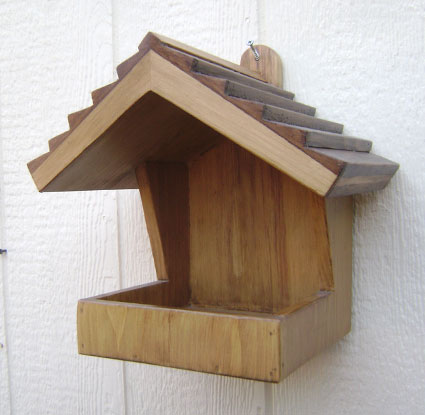
Various models come in different shapes, sizes and colors. Doing research about the birds in your local habitat will help you determine what model is right for your environment. Consider additional aspects of a bird house that will enhance functionality, such as predator guards, ventilation, breathable materials, fledgling ledges, landing ledges and horizontal perches (not perpendicular).
Certain birds mainly seek enclosed structures for the protection of their eggs, while others might look for an open platform structure for roosting. Not all feel the need for safety as much as others do simply because they are not as vulnerable. Motherbirds will not typically lay eggs on the ground surface, but some will. In fact, the burrowing owl will dig a hole in the ground for protection. Penguins lay their eggs in snow, rocks, slops, bushes and burrows.
The male weaver is an expert nest-designer capable of constructing a sophisticated home using simple materials, and in a short amount of time. Other species, such as songbirds, follow their instincts and natural skills to achieve amazing feats when creating a place to nest, rest and hide. The chances of any type of avian wildlife choosing your backyard for a home are better if your property is peaceful with minimal movement and low noise.
Parents and kids can do their part too!
Parents will find it satisfying assisting children in mounting a simple bird house. Mounting a bird house is easy and takes little time. When parents teach their kids about bird houses, kids learn about natural processes, such as incubation, gestation periods and general reproduction. Kids will find it fascinating to watch eggs hatch and grow into fledglings. They'll develop a better understanding of how birds evolve and survive, eventually growing up with a deeper appreciation of wildlife.
Teaching kids about avian life also gives them a wider understanding of ecosystems. Indeed, ecosystems are everywhere - forests, deserts, coral reefs, mountainous regions, urban areas and more. Habitats are pockets of natural activities within those ecosystems, and some are much closer to home, such as empty fields, parks, residential backyards, even business districts. Yes, the great outdoors includes it all, no matter where you are, offering advantages and opportunities for kids to observe things in nature. Birdlife is only one part of it, as an ecosystem is a community of living and non-living things that work together - soil, sun, air, water and life.
Plants and animals all play a part in the balance of nature, and they're available for anyone to enjoy. A child will enjoy watching a Goldfinche because of its yellow feathers. And what's more fascinating to see when purple martins fly through the air like acrobats? The sight of these amazing creatures will increase a child's perception and awareness for the colorful and diverse beauty all around them. But kids might miss out on these wonderful things if an adult does not direct their attention toward them.
Declining Bird Populations
Scientists have found that the number of birds in the United States and Canada has declined significantly in past decades. Although a few species have recovered somewhat, the majority of all other bird groups have declined about 29% overall since 1970.
The first impression people might get when they think of a bird house is that it's just a basic structure with the primary purpose of protecting eggs. And for the most part, this is true, but a bird house may help to keep avian populations strong even in lieu of a larger reality involving disruptions. In our busy world, there are enumerable forces that can disrupt the balance of nature. Examples of disruptions include:
Unfortunately, disruptions occur in nature all the time, but a bird house may help to offset some of those disruptions. A hundred years ago, the global population was only about 2 billion. But today, the total population on earth has grown to the point where disruptions caused from humans is not only a constant problem for animals in their normal habitat, but a rapidly progressing threat. Human encroachment has forced all types of animals to migrate into other habitats with climates that they are not compatible with. Furthermore, disruptions force them to live among unfamiliar predators in which they cannot defend themselves against. If every homeowner in America placed at least one sturdy wooden structure in a tree or elsewhere, our feathered friends would have a much better chance of survival when disruptions occur. It's a small effort resulting in a big difference!
North American Bluebird
Since the beginning of the Industrial Revolution, songbird populations have been declining steadily. However, in the case of the North American bluebird, side mounted nest boxes have helped to reverse this decline. In recent decades, efforts have been made by humans to help promote bluebird numbers by building bluebird trails, which involves setting up multiple bluebird nest boxes along a track or trail at certain intervals. The efforts made by people in past decades have greatly helped to improve bluebird numbers.
Birds offer unique and dynamic contributions. Those contributions would be non-existent in certain areas if it were not for the efforts of compassionate human beings who were willing and ready to help. This is true also of organizations who have reputations for being proactive toward helping bluebirds and other wildlife. In 1978, the North American Bluebird Society (NABS) was formed by citizen scientists and birders concerned about the drastic decline in the bluebird population. Also, all birds and their nests, with the exception of pigeons, starlings, grackles, and English house sparrows, are protected under the federal Migratory Bird Treaty Act (MBTA). PETA»
Fortunately for all birds, with the help of individuals and organizations, higher levels of awareness have spurred birdlovers to become more proactive in their efforts to promote the reproduction of mating birds.
Imagine what our world would be like without songbirds...
The sounds of singing birds makes us feel good. What would our lives be like if suddenly we could not hear them singing in the morning? As we live our busy lives, the sound of a songbird outside our window helps us to feel pleasure and calmness. It gives us a sense that we are at peace with nature. Bird calls range from sweet-sounding to loud crowing, and many other sounds including chirping, chipping, crying, whistling, peeping, and even the screeching sound of a barn owl. It's easy to appreciate the presence of all birds when you consider what they do for us. The next time you feel stress or anxiety, take a walk through a wilderness area and listen to the sounds of nature, the wind blowing through the trees, water flowing down a stream, and the sound of a robin singing high up in a shade tree.
Diversity
Indeed, mother nature has given us a lot to appreciate. Everywhere you go in the world, you'll see avian creatures of all sizes, shapes, and colors relying on bird houses to survive. Bird houses fit into the natural order of evolution because they help the numbers of birds strong. Providing a warm and safe place to lay eggs increases the chances of a successful gestation period, and eventually giving offspring the chance to leave the nest and assume a positive role in nature. This keeps the chain of evolution and reproduction progressing forward. Biodiversity involves a wide spectrum of wildlife and plants thriving together, collectively doing their part in nature.
The mere presence of birds makes us appreciate them, as their continual actions so easily gets our attention. Whether it's a songbird singing, a parrot showing off its feathers, or a Wood Duck swimming, these creatures possess the ability to entertain us and add value to our lives, reminding us of the simple things in life.
Bird houses do not raise property values!
A birdhouse by itself is not a single item that is significant enough to raise the value of a home or other type of real estate. No matter how expensive the bird structure is, it will not raise the value of any kind of property, commercial or residential.
Conclusion
Birds are magnificent creatures, and arguably one of the greatest among all survivalists. With their ability to run, hop, jump and fly, they are readily able to hunt and forage for food, defend against predators, flee from danger, provide for their young, relocate and adapt. Yes, our winged-friends are incredibly diverse, and you never know what you'll see when you look through a pair of binoculars. Their colors, feathers, and shapes makes them very attractive and fun to watch.
"You can do your part by mounting a home for birds in your neighborhood where they can find it!" Watch Birdhouse Benefits video.
